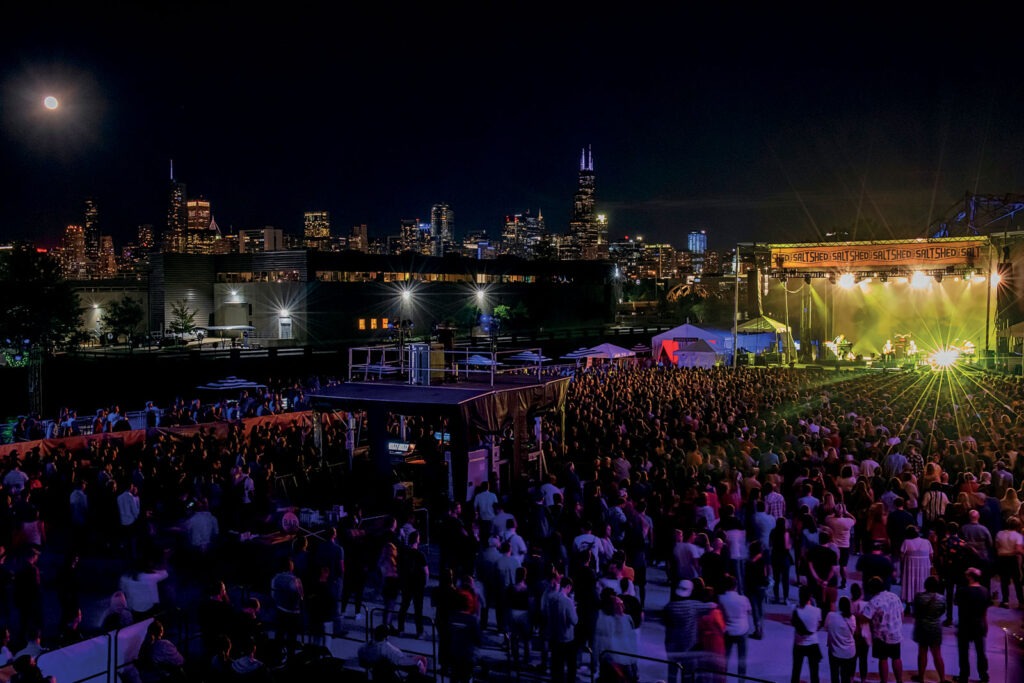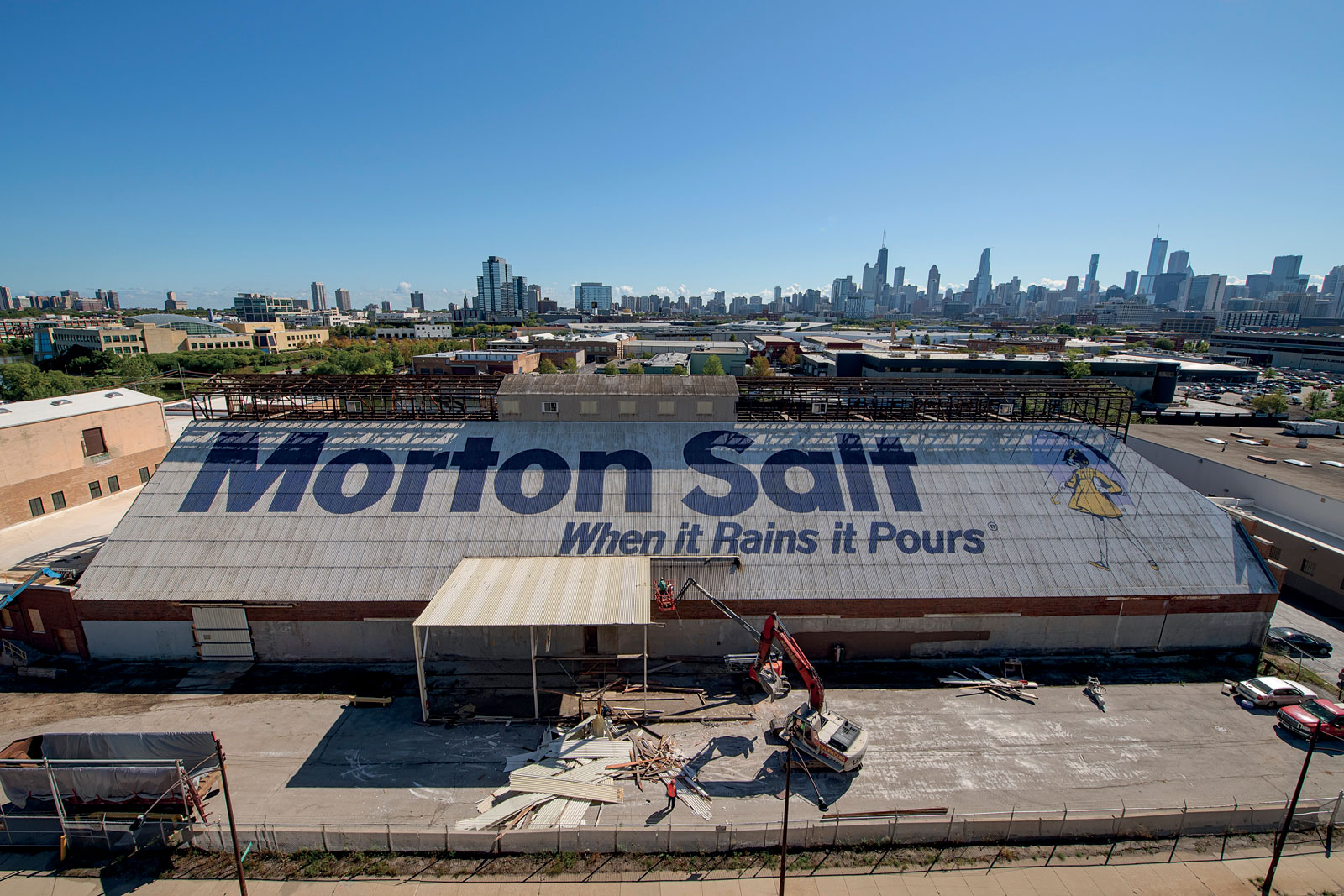Documentary photographer Sandra Steinbrecher first stepped onto the property at North Elston Avenue and West Blackhawk Street at the intersection of its past and future. In September 2021, this looming steel structure was no longer the Morton Salt complex, which held the space from 1929 to 2015, and it was not yet the music venue now known as the Salt Shed, which opened in 2022.
Steinbrecher had asked Craig Golden, founder of Blue Star Properties, which owns Salt Shed, if she could walk through with her cameras at the very start of the renovation, when crews were just beginning to disassemble the structure. She had no idea at the time what she would do with the photos she would take, if anything, but she was quickly struck by how momentous the Salt Shed project would be.
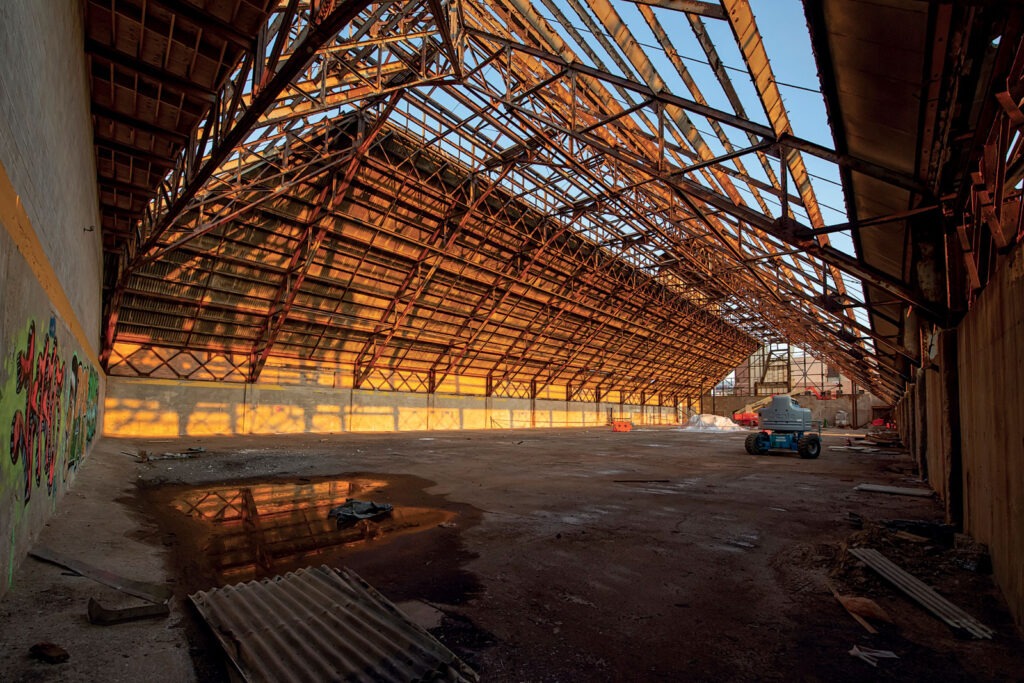
She kept returning to the construction site, and the dramatic transformation she documented was recently released by Trope Publishing as a 144-page book, The Salt Shed.
Steinbrecher says the decision to reinvent the facility, with its iconic Morton Salt Girl painted on the roof, illustrates how we can show care for our shared memories and cultural landmarks.
“When you pay attention or put a light on something, you’re sort of saying, ‘Look what’s here, look at what we did,’” Steinbrecher says. “This building was a classic industrial production shed from the 1920s, but the design and the integrity and the materials were all worth saving — and it’s more than the materials, it’s the memories. People from all generations and all kinds of backgrounds can have an appreciation for this place.”
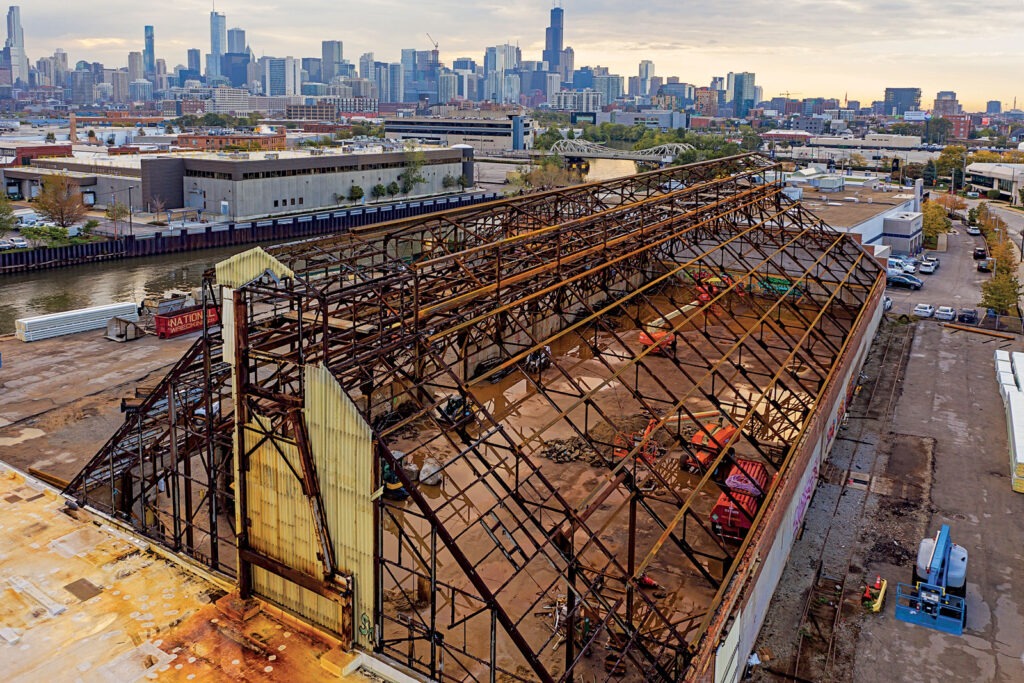
Steinbrecher photographed the structure from as many angles as she could capture: Under its exposed steel beams, from atop nearby buildings, under its floors and on its roof. She often arrived early to capture not just the workers in action, but the morning light as well. “It was visually very exciting,” she says.
The people working on the site were one of the most invigorating parts of the project for Steinbrecher. She devotes a chapter to them, but they’re present in images throughout the book.

“I grew to have so much appreciation for the melding of those worlds: architecture and engineering and history and then the trades and laborers,” she says. “Everybody needs everybody, right?”
When workers had downtime, Steinbrecher would chat with them, gaining an appreciation for pride they would take in their work and watching pieces of their personal life trickle in. One day a pipefitter might pull out a note from his 10-year-old daughter with his sandwich. Steinbrecher learned that the plumbing foreman would learn that the plumbing foreman would call his father — a retired plumber himself — nearly each night to discuss what happened onsite that day.
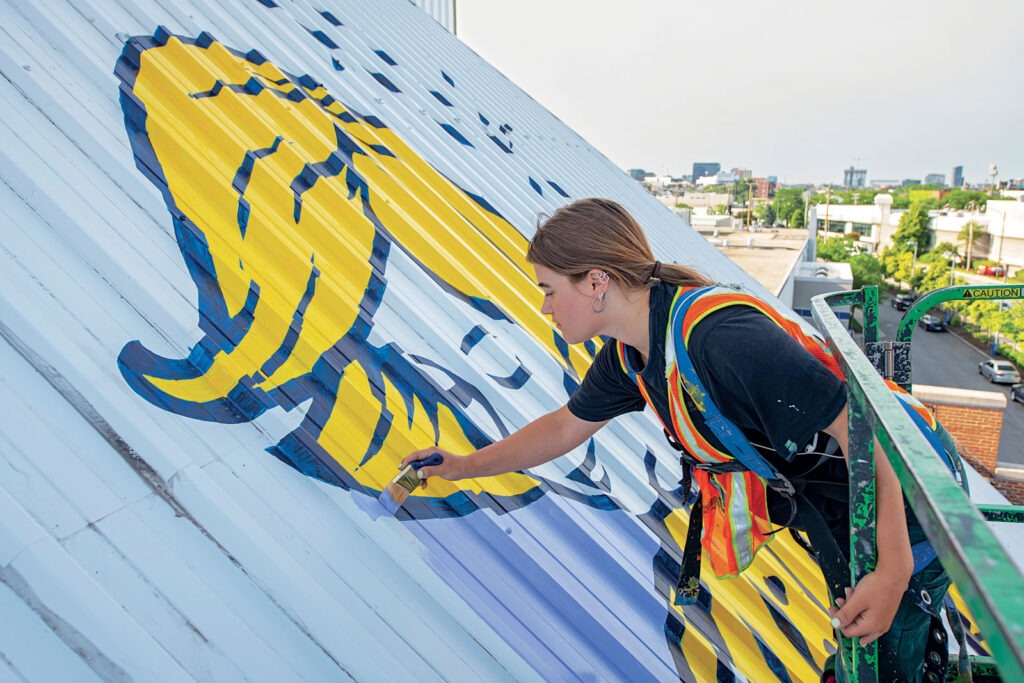
She expected to see the machinery, but she didn’t anticipate the level of hands-on work that was involved. In photographing the workers’ activities — a young woman repainting the towering Morton Salt Girl, the choreographed dance of leveling cement floors — she wanted to draw readers’ eyes to the literal connection people have to their built environment.
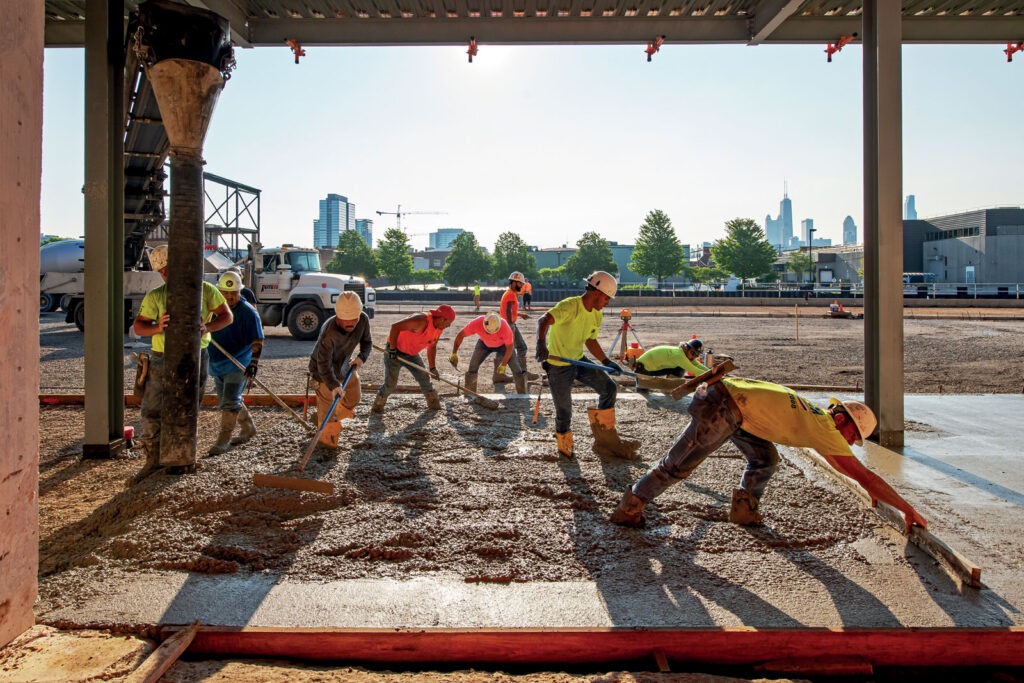
Showing people throughout the process of building the Salt Shed also provided perspective to the scale of the structure. In the book, Steinbrecher shows workers fitting tightly into manholes and perched on steel against the city’s skyline. As the story moves toward the venue’s completion, we also begin to see the shift in energy: Laborers hammering through daylight hours give way to electricians knitting together cables later in the day.
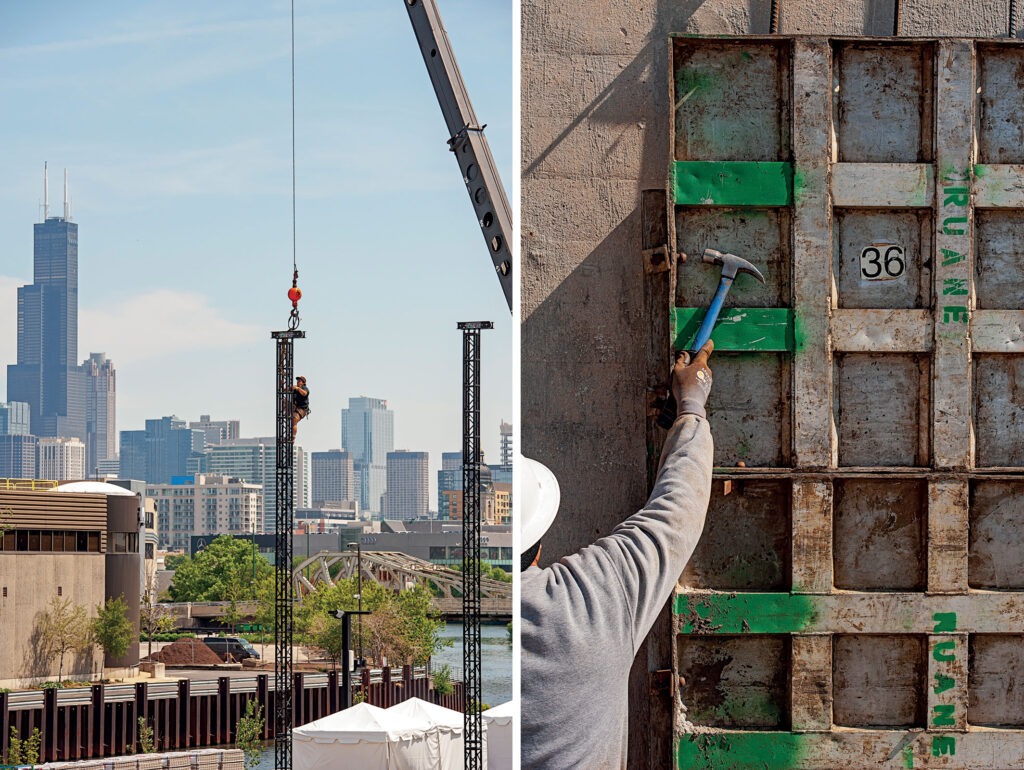
Eventually we see the tone of the space change completely. The book ends at the Salt Shed’s current state as a cultural venue, with images of performers and their audiences both inside the Shed and outside at the Fairgrounds. Here again, Steinbrecher shows the depth of of the building: the people milling about the facility, with skyscrapers and the river looming just behind them.
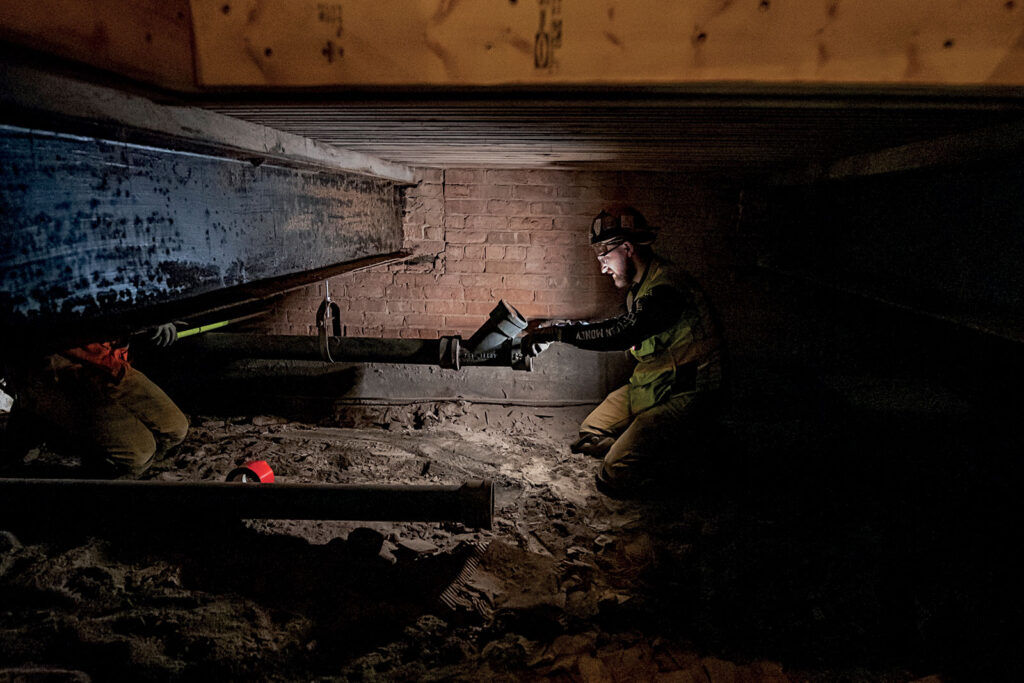
In the book’s forward, writer Heidi Stevens says that people now have an opportunity to connect with the past with this reinvented space. Rather than tearing down a structure that thousands have marked on their passage through the city each day, it has been repurposed into a destination itself.
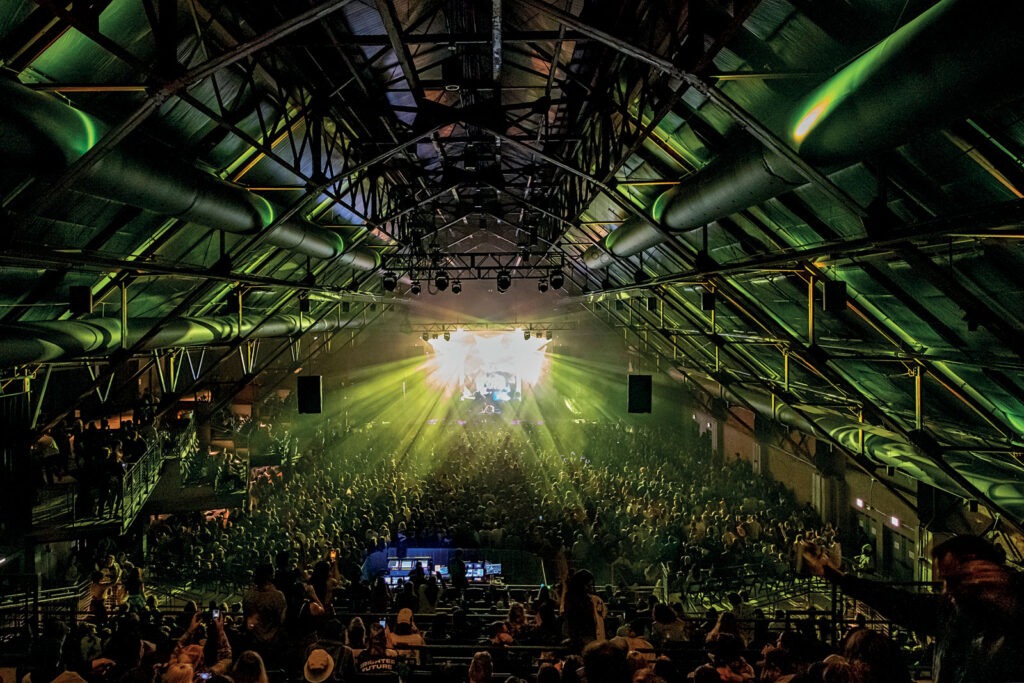
“One of the things I was hoping might happen with this photography and the stories, is that it could make historic preservation come alive for people so that it would feel like something you could do, or you would want to do,” Steinbrecher says. Rather than saving buildings because they were designed by a famous architect or because they were grand civic spaces, she’s hoping the book reminds people to have an appreciation for these equally important industrial structures. And they don’t have to become museums, either.
“This also is a living, breathing space,” she says. “Now it’s a living landmark. It feels very much alive and full of life.”
